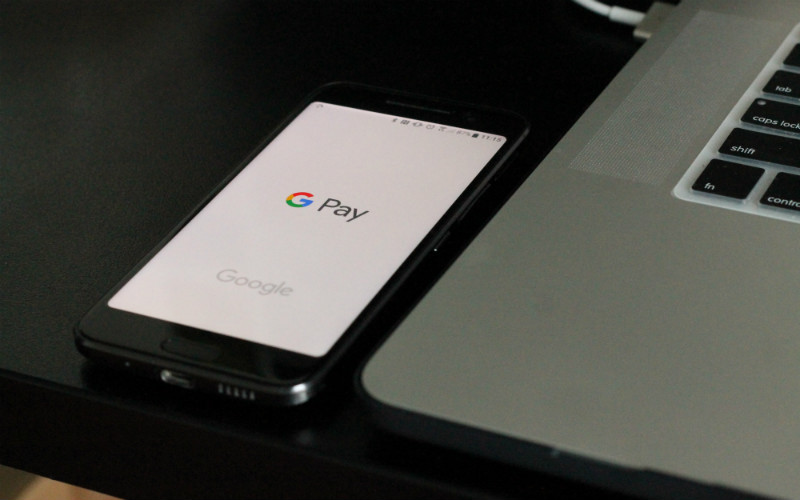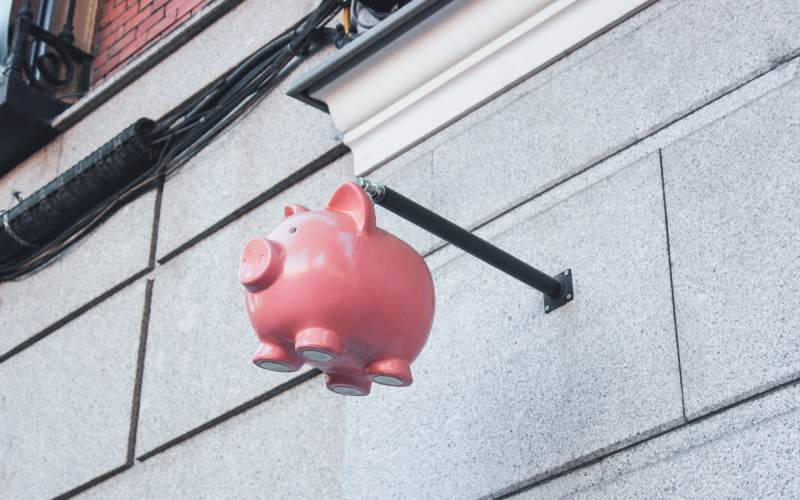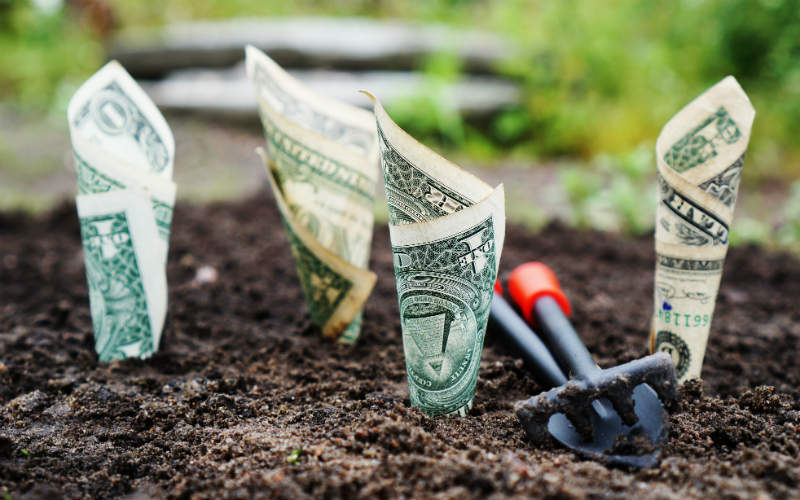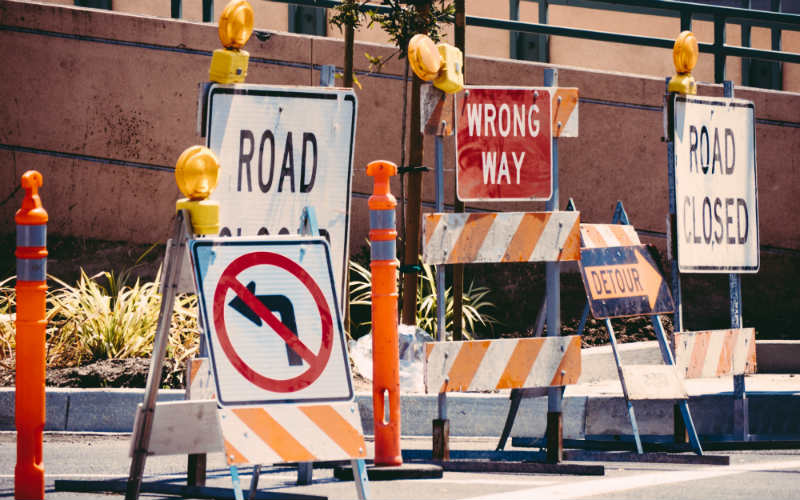This was the beginning of wage standards in Australia. These days, the minimum wage is a hot political topic, with seemingly perpetual campaigns to have it increased. Inflation is an inevitability after all, so policy makers need to ensure wages keep up as the cost of living increases. At the moment, as we'll get to, Australia actually has one of the highest minimum wages in the world.
For some people though, this still isn't enough. A sizeable proportion of Australians live in poverty, by the definition of the Australian Council of Social Services (ACOSS), and there's many who feel our minimum wage needs to be lifted in order to be a true 'living wage'. As automation and AI tools like ChatGPT become more sophisticated, there's also growing concern about how society will adjust should the coming decades see robots and computerised systems putting more and more people out of work. Universal Basic Income (UBI) is a proposed payment that all citizens would receive, without a means test or the obligation to be looking for work. It's a relatively new idea endorsed by the likes of Elon Musk, and would supplant the existing welfare system.
So do we have a living wage in Australia at the moment, and is UBI a realistic idea? This article will explore both.
Need somewhere to store cash and earn interest? The table below features savings accounts with some of the highest non-introductory interest rates on the market.
Provider | |||||||||||||
|---|---|---|---|---|---|---|---|---|---|---|---|---|---|
| 0 | 200 | 0 | $product[$field["value"]] | $product[$field["value"]] | $product[$field["value"]] | More details | |||||||
| No monthly fees | Save Account
| ||||||||||||
Save Account
| |||||||||||||
| 0 | 1000 | 0 | $product[$field["value"]] | $product[$field["value"]] | $product[$field["value"]] | More details | |||||||
Savings Maximiser (<$100k) | |||||||||||||
| 0 | 1000 | 0 | $product[$field["value"]] | $product[$field["value"]] | $product[$field["value"]] | More details | |||||||
Boost Saver | |||||||||||||
What is the minimum wage in Australia?
The minimum wage is the base rate an employee must be paid in Australia for ordinary hours worked, regardless of whether they've agreed to be paid less. It's illegal for Australian businesses to pay employees below the national minimum wage.
For a 38-hour work week, which is seen as the standard in Australia, the current national minimum wage is $812.60 per week before tax, which is $21.38 per hour. The minimum wage in Australia is reviewed every year by the Fair Work Commission (FWC), and is usually increased slightly each year to account for inflation.
You can see the previous minimum wages in Australia and how they've changed year-on-year, with only one year (2009) seeing no change since 2007.
|
Year |
Wage (per hour) |
Wage (per week) |
Wage (per year) |
% increase from previous year |
|---|---|---|---|---|
|
2007 |
$13.74 |
$522.12 |
$27,150.24 | - |
|
2008 |
$14.31 |
$543.78 |
$28,276.56 |
4.15% |
|
2009 |
Unchanged |
Unchanged |
Unchanged |
0.00% |
|
2010 |
$15.00 |
$569.90 |
$29,634.8 |
4.80% |
|
2011 |
$15.51 |
$589.30 |
$30,643.6 |
3.40% |
|
2012 |
$15.96 |
$606.40 |
$31,532.8 |
2.90% |
|
2013 |
$16.37 |
$622.20 |
$32,354.4 |
2.61% |
|
2014 |
$16.87 |
$640.90 |
$33,326.8 |
3.01% |
|
2015 |
$17.29 |
$656.90 |
$34,158.8 |
2.50% |
|
2016 |
$17.70 |
$672.70 |
$34,980.4 |
2.41% |
|
2017 |
$18.29 |
$694.90 |
$36,134.8 |
3.30% |
|
2018 |
$18.93 |
$719.20 |
$37,398.4 |
3.50% |
|
2019 |
$19.49 |
$740.80 |
$38,521.6 |
3.00% |
| 2020 | $19.84 | $753.80 | $39,197.6 | 1.75% |
| 2021 | $20.33 | $772.60 | $40,175.2 | 2.49% |
| 2022 | $21.38 | $812.60 | $42,255.2 | 5.18% |
Source: Fair Work Commission
The average annual increase since 2007 is 2.96%, which is higher than the average annual inflation rate of 2.33% over the same period.
How is the minimum wage determined?
The Fair Work Commission sets the minimum wage every year after considering:
- Written submissions from relevant individuals and organisations
- Consultations given before an expert panel
- Research commissioned by an expert panel
After reaching its conclusion, the Fair Work Commission then announces the changes and puts them into effect on July 1 each year, to give businesses enough time to adjust to the changes.
The most recent change came in 2022, when it was announced the minimum wage would be increased by 5.18% to $21.38 per hour. This works out to be $2,184 extra a year (assuming a 40 hour working week). The Australian Council of Trade Unions (ACTU) have announced they are calling for a 7% increase to be announced in July 2023 in the light of cost of living pressures.
Awards
Many employees in Australia work in an industry covered by a modern award wage, which contains the minimum wage as well as other terms and conditions depending on the industry. This means award wages are usually a fair bit higher than the minimum wage. The Fair Work Ombudsman has an award finder tool that lets you know if your particular industry is covered by an award.
How does this compare to other countries?
The usual way to compare minimum wages in local currency with one another is to convert to US dollars. This is how Australia stacks up against some of the other countries in the OECD, using 2022 minimum wages and the conversion rate to USD as of June 30th, 2022, as per International Money Transfers.
| Nation | Hourly wage in local currency | Hourly wage in USD |
|---|---|---|
| Australia | $21 AUD | $14.76 |
| Canada | $CA 15 | $11.71 |
| Czech Republic | 96 Koruna | $4.10 |
| Estonia | €4 | $4.22 |
| France | €11 | $11.62 |
| Germany | €10 | $10.57 |
| Hungary | 1,150 Forint | $3.06 |
| Ireland | €11 | $11.62 |
| Israel | 29 Shekels | $8.51 |
| Japan | 938 Yen | $7.00 |
| Korea | 9,160 Won | $7.11 |
| Lithuania | €4 | $4.22 |
| Luxembourg | €13 | $13.74 |
| New Zealand | $NZ 21 | $13.35 |
| Slovakia | €4 | $4.22 |
| Spain | €8 | $8.45 |
| United Kingdom | £9 | $11.09 |
| United States | $USD 7 | $7 |
As you can see, Australia stacks up pretty well, with the highest minimum wage in USD among the OECD nations. In 2019, the Institute of Economic and Social Sciences in Germany found that Australia had the highest minimum wage in the world, so wages have seemingly been consistently strong in recent times.
This doesn't tell the whole story though. While you can draw some conclusions about the relative strength of a nation's economy from the minimum wage, it's important to remember that the cost of goods can be just as variable between countries. You might be outraged that the minimum wage in Hungary is little over $USD3 an hour, but that amount likely goes a lot further in Budapest than it would in Sydney, for example.
Comparing purchasing power parity across nations is therefore challenging, but The Economist have a fun method of comparison that we'll use here. The Big Mac Index compares the cost of a Big Mac at McDonald's in local currency to approximate the relative cost of goods in each country (a Big Mac is a homogeneous product that at least partially captures the cost of beef, transport, grain and vegetables, among other things). This table converts each countries minimum hourly wage into how many Big Macs that amount could buy.
| Nation | Cost of a Big Mac as of July '22 | How many Big Macs can you buy with the hourly minimum wage? |
|---|---|---|
| Australia | $AUD 6.7 | 3.1 |
| Canada | $CAN 5.88 | 2.6 |
| Czech Republic | 95 Koruna | 1 |
| Estonia | €4.65 | 0.9 |
| France | €4.65 | 2.4 |
| Germany | €4.65 | 2.2 |
| Hungary | 1030 Forint | 1.1 |
| Ireland | €4.65 | 2.4 |
| Israel | 17 Shekels | 1.7 |
| Japan | 390 Yen | 2.4 |
| Korea | 4,600 Won | 2 |
| Lithuania | €4.65 | 0.9 |
| Luxembourg | €4.65 | 2.8 |
| New Zealand | $NZ 7.1 | 3 |
| Slovakia | €4.65 | 0.9 |
| Spain | €4.65 | 1.7 |
| United Kingdom | £3.69 | 2.4 |
| United States | $USD 7 | 1.4 |
As you can see, this is another metric where our minimum wage is triumphant. This isn't a perfect tool to compare by any means: countries that typically import beef would have a higher relative cost for example, and The Economist also does not distinguish between Euro areas, which seems unrealistic. The Big Mac Index does though demonstrate that our minimum wage is relatively high in real as well as nominal terms.
Do we have a living wage?
There isn't a clear definition for what a 'living wage' entails, but the principle is that all workers are guaranteed to be paid an amount that covers all of their basic living expenses, and stay out of poverty. The Australian Council of Social Services (ACOSS) define poverty as anyone who lives in a household earning less than 50% of the median national income, the Henderson poverty line. For a single adult, ACOSS say that this figure is $489 per week, or $1,027 for a couple with two children.
The minimum wage therefore is seemingly fit for purpose for single adults, but a family trying to survive off a single minimum wage salary are likely to run into problems. We do have welfare payments like child support that are designed to bridge this gap, but some would argue that in order for our minimum wage to be considered truly liveable, it should enable a family to stay out of poverty.
The OECD have a slightly different definition for a living wage. In a 2023 report on the matter, the OECD quotes the definition of Richard and Martha Anker as the most commonly cited definition of what a living wage entails.
“[A living wage should allow a family/individual to afford a] basic, but decent, life style that is considered acceptable by society at its current level of economic development. Workers and their families should be able to live above the poverty level, and be able to participate in social and cultural life.”
The Ankers provide a framework for estimating a living wage. Essentially, a living wage should provide families with enough money to cover the following:
- Food: A low cost, but nutritious diet that meets World Health Organization (WHO) recommendations on calories, macronutrients, and micronutrients and is consistent with local food preferences and a country’s development level.
- Housing: Acceptable housing must meet both international and national decency standards, meaning basic amenities like electricity and water, proper ventiliation, and enough living space for parents to sleep separately from children.
- Cost for other essential needs: This could include education, childcare costs, transport or medical care, among other things. It is based on the acceptable standard of living in Australia.
- A margin for 'unforeseen events'
Again, this is open to interpretation, and these costs will fluctuate heavily with inflation.
One body that's convinced the minimum wage in Australia does not meet these standards is the ACTU, which is calling for a record 7% increase in 2023. This would lift the minimum hourly rate to $22.88, and the full-time minimum wage to $45,337. The ACTU says that such a drastic movement is necessary with inflation so high.
“A 7% pay increase is essential for minimum and award wage workers, who have suffered real wage cuts over the past two years," says ACTU Secretary Sally McManus.
"This increase is vital to help working people keep their heads above water. It is simply about survival for the lowest paid workers in our country."
Could the minimum wage be too high?
On the other hand, there are those that argue that continual wage increases actually pose a threat to the Australian labour force. The Australian Industry Group, the yin to the ACTU's yang, have expressed concern that high wages can be a big contributor to inflation. More money in people's pockets tends to result in more spending, after all, and it's demand that the RBA is currently battling with high interest rates. Supply chains were damaged by Covid, but demand continued to grow, so the economy needs to contract slightly to correct this misalignment. RBA Governor Philip Lowe has pointed to strong wage growth as justification for the cash rate increases that have dominated recent monetary policy. A price-wage spiral is a nightmare scenario where rising wages increases the demand for goods, causing prices to rise, which necessitates further wage increases. However, the ACTU says that this isn't what's happening.
"There is now general acceptance of what the ACTU has been saying for a year: there is no wage price spiral in Australia. Instead companies have been posting huge profits, driving inflation through excessive price rises," Ms McManus says.
The ACTU has also pointed to last years wage increase of 5.5%, which had no discernable impact on inflation.
Another argument against wage increases is that if wages are prohibitively high, companies are disinclined to hire people. They might look instead to alternatives like automation instead of taking on new employees. The empirical evidence of this is so far unclear: unemployment has fluctuated around 5-6% over the period since 2008, in which time the minimum wage has increased by nearly 50%. This is part of a broader concern moving into the future of workers across many industries becoming obsolete.
Universal Basic Income
If you've played around with ChatGPT, you might have started to wonder about the people it might put out of work. You probably (correctly) assumed content writers like me are in big trouble, but accountants, software engineers and market analysts are just some of the other professions that could be displaced by the next few generations of AI. Open AI CEO Sam Altman expects artificial intelligence to be a 'continuing exponential', so for anyone who has spent the last few years concerned about a future where robots can do everything people can do, only much better, we might be almost there.
Assuming this doesn't bring about the end of the human race, advances in automation and AI will present novel challenges for policy makers in the coming years. Universal Basic Income (UBI) is a proposed solution. UBI basically means everyone in a society is entitled to unconditional welfare payments. Distinction is sometimes made between a full basic income, where the welfare payments are enough to lift a person above the poverty line, as opposed to a partial basic income, where they would not. Proponents of UBI include Andrew Yang, a 2020 US presidential candidate whose core policy was to provide all adult Americans with $1,000 a month. Pope Francis has also called for UBI.
Critics argue that implementing UBI would be hugely expensive. In 2017, Simon Cowan of the Centre for Independent Studies estimated a UBI that gave everyone in Australia over the age of 18 $1,000 a year, including top ups for welfare recipients, would cost $103 billion each year. UBI could also run the risk of hyperinflation: if everyone all of a sudden has much more disposable income, spending is likely to dramatically increase, which increases the prices of goods and services.
During the pandemic, some of the relief payments became effectively a trial for some form of UBI. Covid payments were often very easy to obtain, with less stringent criteria for eligibility than normal welfare payments. Analysts are divided about the conclusions we can draw from this unintentional experiment. Many people were propped up by payments like the JobKeeper wage subsidy, and the Australian economy quickly rebounded after the Covid recession, seeing big GDP growth, so it could be considered successful. As we know though, the post-Covid surge in growth saw demand soar ahead of supply chains ravaged by the pandemic, and is one of the major reasons for the current high inflation. Other sceptics point to the huge shareholder profits from the period posted by companies like Amazon or UPS as evidence that the payments resulted in more disposable spending, rather than families using the money to secure their financial position.
Savings.com.au's two cents
As with many issues, wage standards are likely to remain a partisan issue in Australia politics. The ACTU and other left-wing institutions will probably continue to push for higher wages, which you'd expect to be met with the usual pushback from those on the right - a constant give and take that might give you confidence in democracy. In the coming years though, artificial intelligence and automation is on track to completely reframe this debate. Although similar concerns about technological advances in the past increasing unemployment have proved unfounded (computers are a good example), I defy you to spend a few minutes on ChatGPT and not be even a little bit concerned about eventually being replaced.
For minimum wage workers, while you might not have much say on labour laws or large language models, you do have the power to find out exactly how much the law requires you to be paid. Wage theft is a problem across Australia and the University of Technology Sydney (UTS) recently estimated that $1 billion in wage theft occurs each year. This could be anything; underpaid wages, overtime not being paid, missed superannuation payments or unauthorised deductions in pay. Make sure to check payslips and pay summaries as they arrive. If you realise you're being paid below the minimum wage or your industry's award rate, you can contact the Fair Work Ombudsman. Even if you aren't able to stop ChatGPT from stealing your job down the line, you could be able to stop your boss stealing from you.
This article was initially published by William Jolly in July 2019 and updated by Harry O'Sullivan in May 2023.






 Harry O'Sullivan
Harry O'Sullivan
 William Jolly
William Jolly













